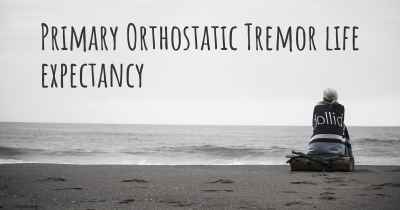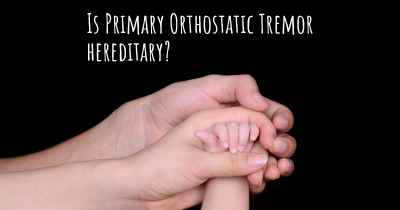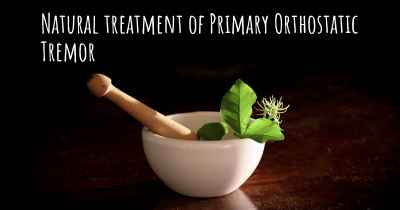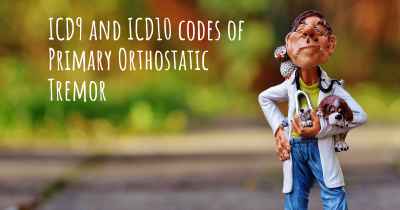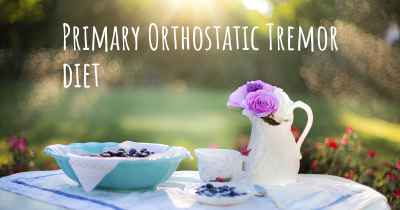Living with Primary Orthostatic Tremor. How to live with Primary Orthostatic Tremor?
Can you be happy living with Primary Orthostatic Tremor? What do you have to do to be happy with Primary Orthostatic Tremor? Living with Primary Orthostatic Tremor can be difficult, but you have to fight to try to be happy. Have a look at things that other people have done to be happy with Primary Orthostatic Tremor
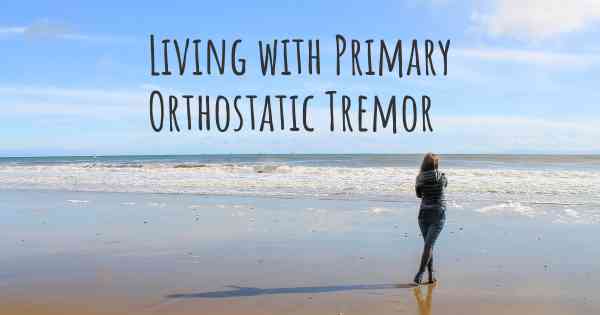
Living with Primary Orthostatic Tremor
Primary Orthostatic Tremor (POT) is a rare neurological condition characterized by rapid tremors in the legs when standing. These tremors can cause significant discomfort and difficulty in performing daily activities. While living with POT can be challenging, there are several strategies and lifestyle adjustments that can help manage the condition and improve quality of life.
1. Seek Medical Advice
If you suspect you have POT or have been diagnosed with it, it is crucial to consult with a healthcare professional who specializes in movement disorders. They can provide an accurate diagnosis, offer treatment options, and guide you on managing the condition effectively.
2. Medication and Therapy
There is no specific cure for POT, but certain medications may help alleviate symptoms. Your doctor may prescribe medications such as clonazepam or gabapentin to reduce tremors. Physical therapy and occupational therapy can also be beneficial in improving balance, strength, and coordination.
3. Assistive Devices
Using assistive devices can significantly enhance mobility and stability for individuals with POT. Consider using a cane, walker, or other mobility aids to provide support and reduce the risk of falls. These devices can help you maintain independence and carry out daily activities with greater ease.
4. Lifestyle Modifications
Adopting certain lifestyle modifications can help manage POT symptoms effectively:
- Regular Exercise: Engage in low-impact exercises such as swimming, cycling, or tai chi to improve muscle strength and flexibility. Consult with a physical therapist to develop an exercise routine tailored to your needs.
- Stress Management: Stress can exacerbate tremors, so it's important to find healthy ways to manage stress. Practice relaxation techniques like deep breathing, meditation, or yoga to promote overall well-being.
- Healthy Diet: Maintain a balanced diet rich in fruits, vegetables, whole grains, and lean proteins. Proper nutrition can support overall health and potentially reduce symptoms.
- Adequate Rest: Ensure you get enough sleep and rest to minimize fatigue, which can worsen tremors. Establish a regular sleep routine and create a comfortable sleep environment.
5. Support Network
Living with POT can be emotionally challenging, and having a strong support network can make a significant difference. Connect with support groups, both online and offline, where you can share experiences, seek advice, and find emotional support from others who understand what you're going through.
6. Educate Yourself
Take the time to educate yourself about POT. Understanding the condition, its symptoms, and available treatments can empower you to make informed decisions about your health. Stay updated on the latest research and advancements in POT management.
7. Communicate with Others
Inform your family, friends, and coworkers about your condition. Openly discussing POT can help them understand your needs and provide necessary support. Effective communication can also help alleviate any anxiety or misconceptions surrounding your tremors.
8. Safety Precautions
Take precautions to ensure your safety and prevent falls:
- Remove Hazards: Clear your living space of any tripping hazards, such as loose rugs or cluttered walkways.
- Install Handrails: Install handrails along staircases and in bathrooms to provide additional support and stability.
- Use Non-Slip Mats: Place non-slip mats in the bathroom and shower to reduce the risk of slipping.
- Wear Proper Footwear: Choose supportive, non-slip footwear that provides stability and reduces the risk of falls.
Living with Primary Orthostatic Tremor requires patience, adaptability, and a proactive approach to managing symptoms. By implementing these strategies and seeking appropriate medical care, you can lead a fulfilling life while effectively managing the challenges posed by POT.
Posted Dec 1, 2021 by Marie Witham 1500
